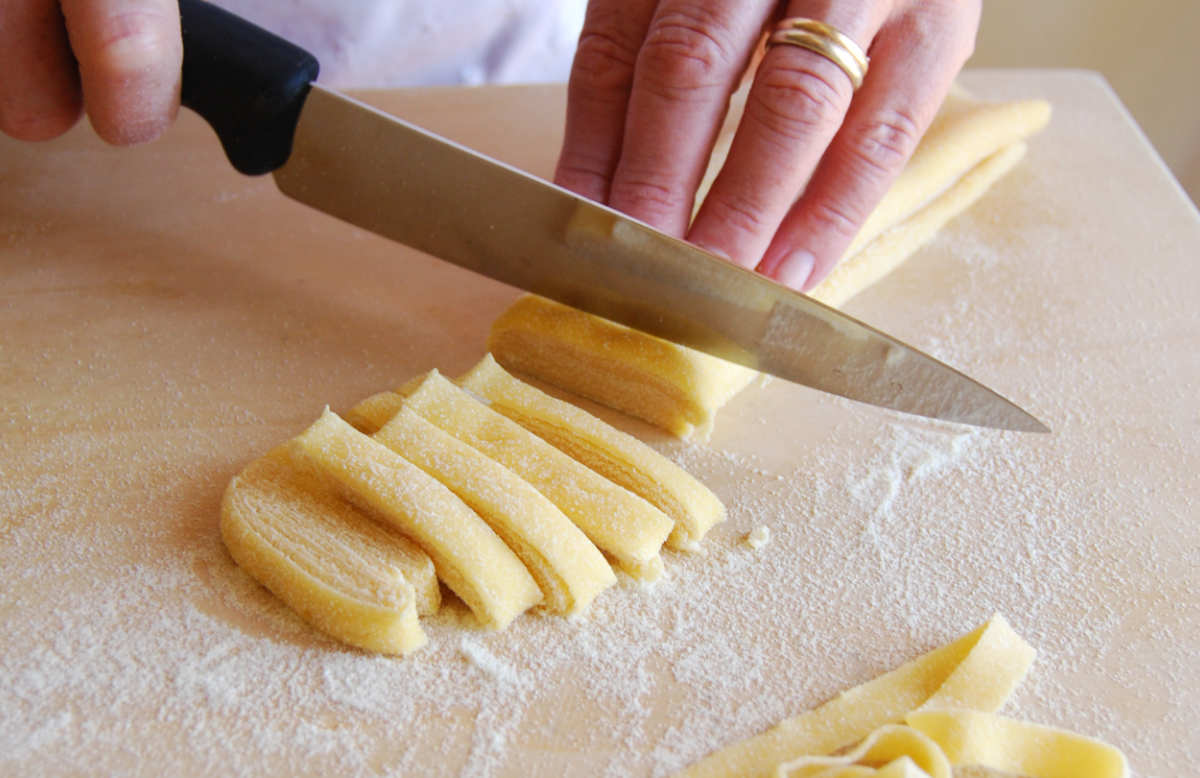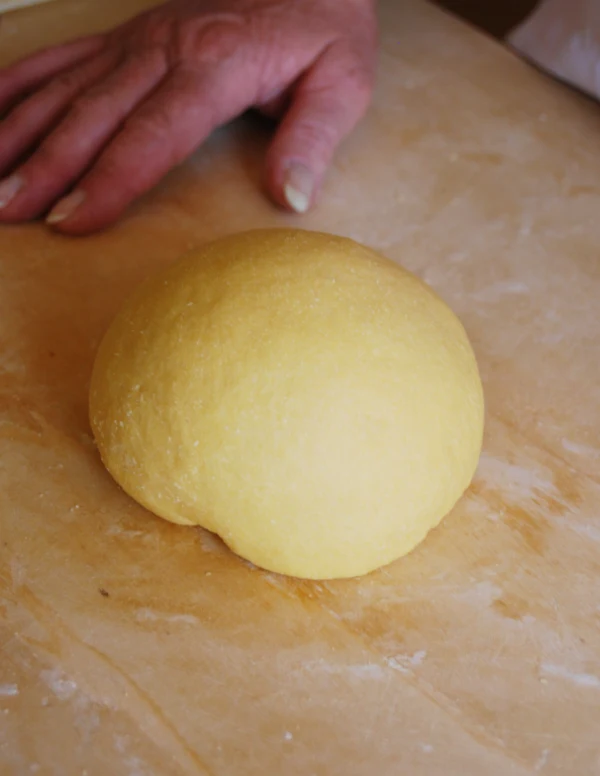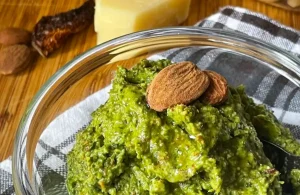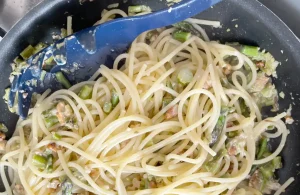Making pasta at home is easy, maybe a little time consuming if you want to make it in large batches but it’s always worth the extra time and effort.
Fresh home made pasta: with and without eggs
There are two types of fresh pasta: with eggs and without. Pasta made with eggs is richer and is usually made for lasagne, fettuccine, tagliatelle or stuffed pasta such as ravioli or tortellini.
If you want to prepare a classic Sunday lunch recipe, the egg pasta is definitely the go to recipe, this one below is the basic recipe I use when I want to make lasagne or fettuccine. The end result is tougher than the elastic pasta you can make with only flour and water and has also a rougher texture that can keep the sauce better that the smoother surface of the other one.
Fresh home made pasta: basic rules
The basic rule is 1 to 100, meaning 1 egg for 100gr of flour. That is the average serving for one person. The flour is usually durum wheat finely milled semolina (semola rimacinata) but you can also use regular flour.
If you want to make fresh pasta without eggs you can use 60/70gr of water for each 100gr of flour.
TIP: do not add all the water in one go, add half then increase the quantity, or you may end up with a very sticky dough.
You can make it by hand or use a food processor with the blade or a kitchen machine with the hook attached.
Ingredients for 4 servings:
- 400gr of flour
- 4 eggs
Method
STEP 1
Preparing pasta by hand: Pour the flour on to a board and make a hole in the center.
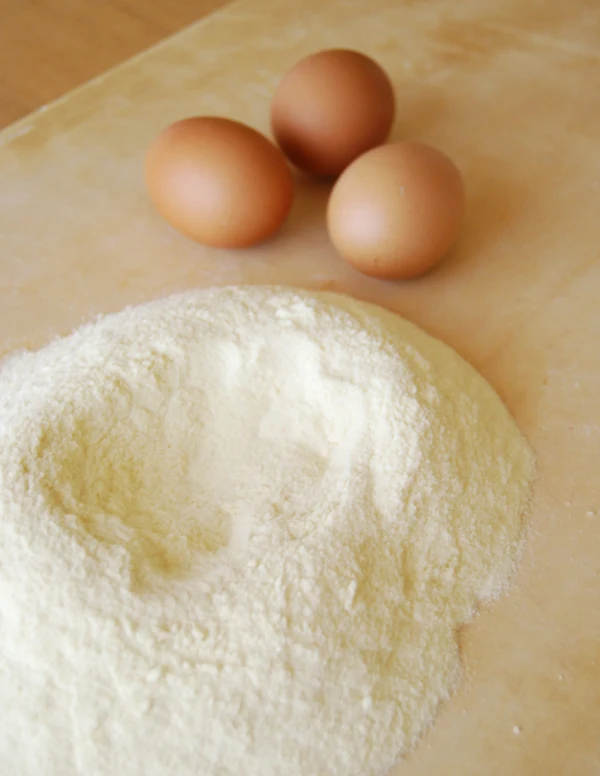
Pour the beaten eggs and gradually mix the two ingredients with a fork.
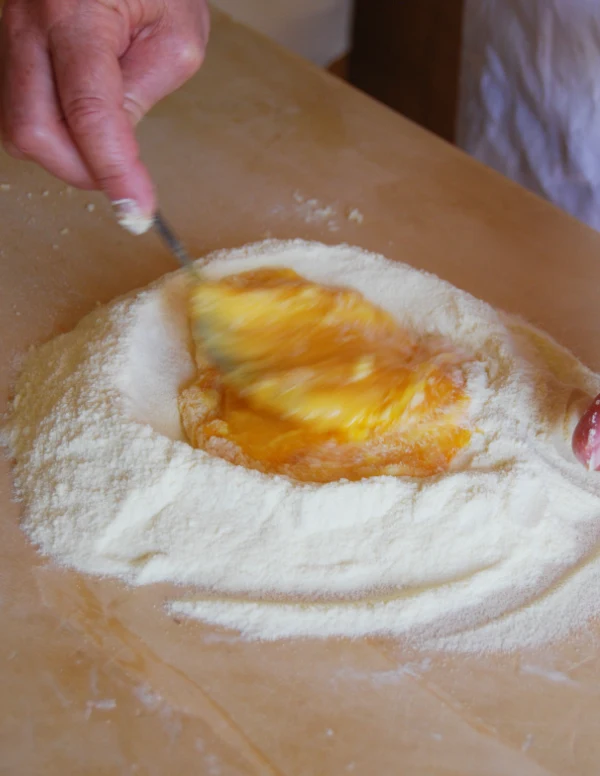
Preparing pasta with a food processor: Put the flour and eggs into the mixer, using the metal blade. Turn it on for about 15/20 sec. The mixture should become crumbly.Pour the crumbles onto the surface of you countertop or onto a wooden board and knead it for a minute with your hands, until it becomes smooth.
STEP 2
When the eggs have absorbed the flour, start kneading the dough with you hands. Knead until the dough is smooth.
STEP 3
Let the dough rest for at least 15 minutes, covered with a plastic wrap, to let the gluten in the dough relax and make it more easy to flatten.
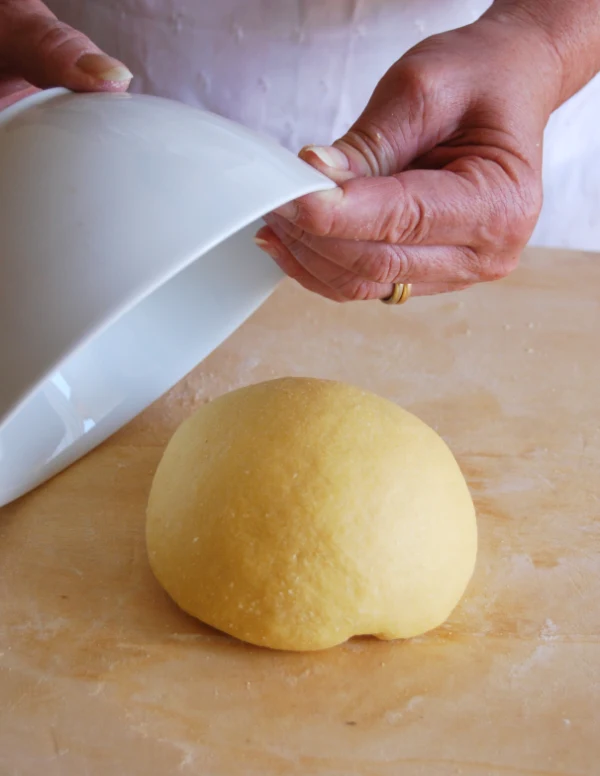
Now flatten the dough with a rolling pin.You can choose the thickness according to your taste. Be careful not to flatten the dough too much, if the fettuccine are too thin, they will easily become gooey when cooked.
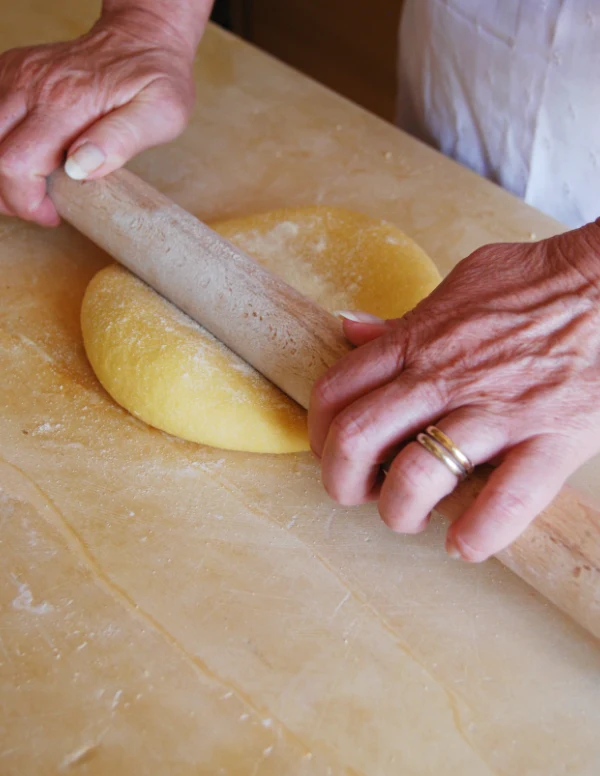
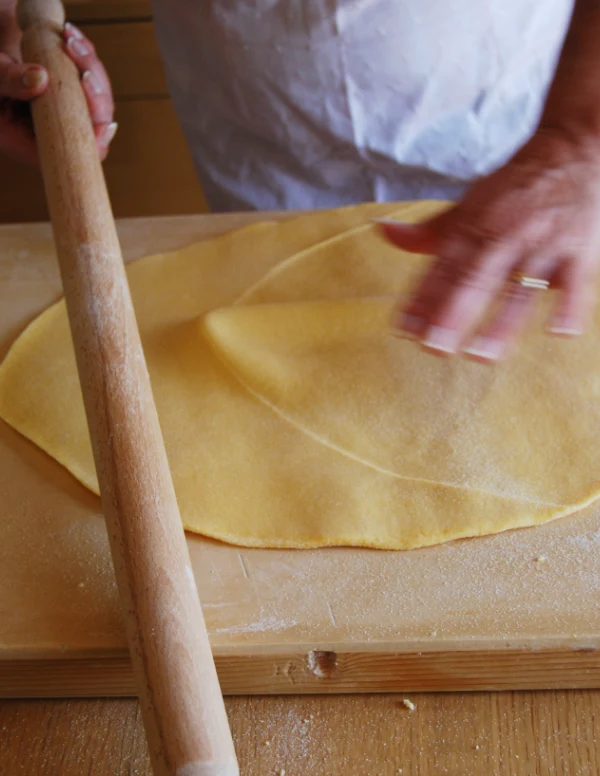
Cut the pasta into your favorite shape, fettuccine (about 6mm wide), pappardelle (about 1cm wide) or tagliolini (3mm wide).
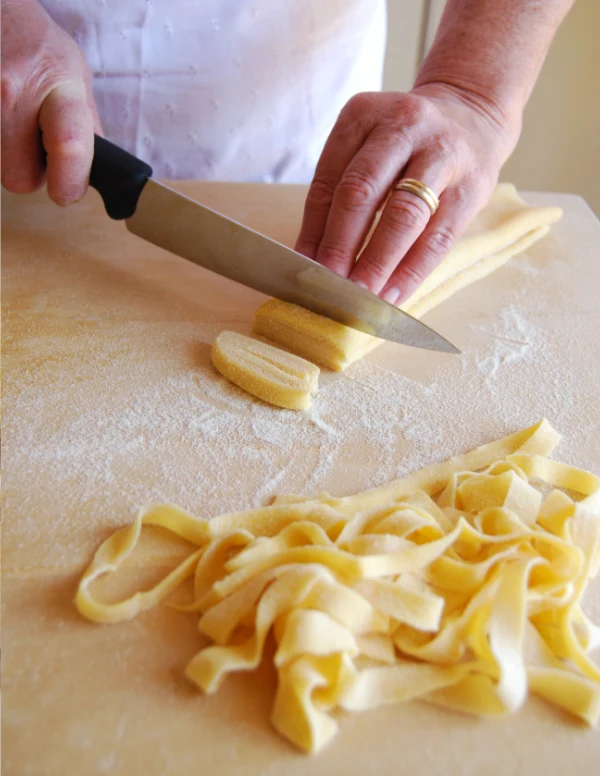
If you have a stuffing you can also make ravioli out of this dough. You just have to pour the stuffing with a teaspoon on the half of the pasta, then wet the spaces between the stuffing and cover with the other half. Press the borders around every spoonful of stuffing and then cut into rectangular ravioli.

